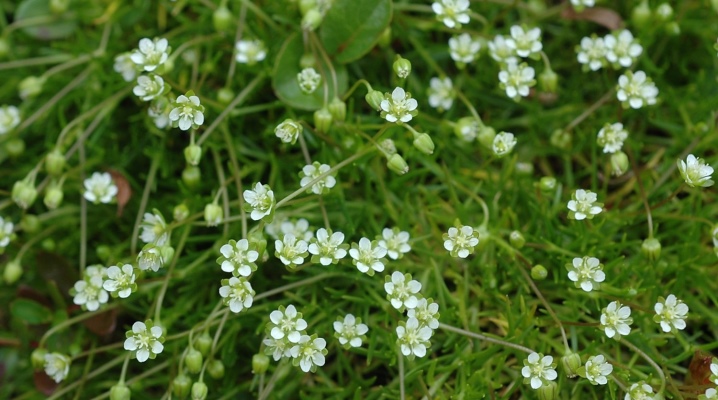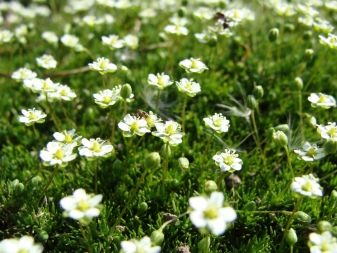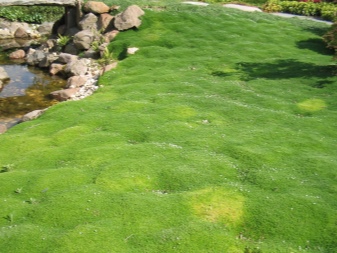Bryozoan: description of species, rules of planting and care

Modern garden plots differ from the more recently popular vegetable gardens by the presence of a lawn. The beautiful design of the site pleases the eye much more if there is a neat, well-groomed grass. The lawn is an ideal place for creating decorative compositions, installing a playground, recreation area. To decorate it, many gardeners choose bryozoan. It is also often called Irish moss. This soft plant is not too whimsical, forms an original decorative effect of aging, for which it has become so popular.




What it is?
Historically, this plant belongs to the Irish species, where the bryozoan herb adorns the legendary hills, illuminated by the bright sun. Once upon a time, the grass covered pastures and was used as food for domestic animals. The name is translated from Latin - "feed". The common second name for the bryozoan, Irish moss, has no proper basis. The botanical description of these plants is different.
Bryozoan belongs to herbaceous evergreen perennials. This genus is directly related to the carnation family.
The culture looks like a continuous cover of grass in the form of a pillow, the maximum height of which is about 10 cm. The stems slope to the ground rather low, softish. This grassy cover gives the impression of a silky surface.




External description of the bryozoan:
- shoots have small foliage;
- the color of the leaves is emerald green, the size is about 1 cm;
- the shape of the plate resembles a needle, sharp;
- leaves are placed opposite each other;
- the rhizomes are powerful, well developed, but on condition that the grass is sown;
- if the reproduction was carried out vegetatively, the grass is more succulent, with a pronounced branching branch;
- bryozoan flowering occurs at different times - in summer, in autumn, it does not bloom too abundantly;
- inflorescences are snow-white, small, up to half a centimeter;
- has a delicate aroma.
In the landscape, bryozoan is most often used as a lawn covering, the plant is able to create a fabulous atmosphere, while it is quite restrained. A huge plus of this type of natural coverage is the absence of the need for a haircut. A spectacular bloom adds expressiveness and enhances the decorative properties of the plant.



Popular species and varieties
Bryozoan is a common representative of the flora. In total, there are about 50 varieties and varieties, in Russia no more than 12 are bred, three of which are the most popular.
- Bryozoan. The cover is quite thick, the plant has branched shoots, the color of the leaves is light green. They are harsh in structure. It grows slowly, blooms in June, there is a white scattering of small flowers. The inflorescence has 5 oval petals.

- Lying. It is also called biting midge. It is a perennial with a short stem and small leaves, the average height is 9 cm. Self-sowing type, perfect for creating compositions with different plants. The root structure is thin, the stems are creeping, the cover is thin. Color - light greens. The foliage is pointed. Flowers are small, four-petaled, about 4 mm in size.


- Subulate. The most popular variety in our country, great for lawns, as the grass becomes dense in structure from walking, does not collapse. The shoots have a pointed shape, which is similar to an awl, hence the name. The leaves are quite bright, rich green tone.It has a surface type root system, as well as creeping, branched stems. The flower is bell-shaped, approximately 55 mm in diameter. Blooms in mid-summer, blooms until autumn. The growth rate is very fast.


In Russia, the so-called Irish moss also has several rather popular varieties.
- Green moss - grass of an emerald tone, blooms all summer, looks good both as a lawn and as a decor for alpine slides, stone compositions, Japanese gardens. The flowering is snow-white, the leaves are small.


- Lime moss - here the foliage has a shade of lime, the culture blooms all summer. It has a short, creeping cover of the pillow type, the foliage is small. The plant is distinguished by strong immunity, suitable for tree trunks, rockeries, Japanese gardens, planting in containers.

- "Surprise" looks like a thick pillow, maximum height - 8 cm. The leaf is small, abundant flowering, until autumn, looks good in stone gardens, in the decor of paths, Japanese gardens.


- Aurea - the lightest variety of all representatives of the genus, has a yellowish tint, the greens are very light. This variety is most often planted together with subulate bryozoan - in combination, these crops look spectacular and form a contrasting, beautiful carpet.

How to plant?
First of all, it must be remembered that dry soil is not a suitable place for planting, the soil must be well moistened. However, excessive watering is also harmful to the bryozoan, it begins to grow worse, the root system rots. In order for the plant to be healthy and develop well, planting is carried out in this way:
- connect part of the sand, part of the drained soil and two parts of peat;
- this soil mixture is laid in a layer of about 20 cm on the ground, this is how a moisture outflow is formed;
- preceding the procedure, it is recommended to introduce a bucket of compost for each meter of planting;
- if the soil is dense, it should be diluted with sand, gravel;
- at first, the soil requires regular loosening, weeding, but weed grass can no longer break through the cover of a mature bryozoan;
- often loam is used for planting, but its ability to retain moisture is too great, so this option is unprofitable - bald spots may appear.
It is important to choose a good planting site. The ideal area will be sunny or slightly darkened. Bryozoan grows well in the shade, but the cover is not as dense as with sufficient light. Irish moss is unpretentious in care, but requires regular, simple activities.


Care rules
Growing bryozoans at home is not difficult even for novice gardeners. A huge advantage of the plant is that there is no need for regular haircuts. Most varieties grow quickly, and it is extremely important to efficiently and competently organize moisture. Watering is required infrequently, in no case should the soil become stagnant.
Bryozoans will more easily tolerate aridity than waterlogging. In hot dry summers, rain irrigation is carried out no more than 3 times a week. If the bryozoan is located in direct sunlight, watering is transferred to the evening, otherwise burns of the grass through drops cannot be avoided.


In order for the plant to develop more actively, feeding should be organized:
- every month the bryozoan is fertilized with mineral-type complexes, the area is completely sprayed with the agent;
- ash, dry mixtures are just as useful - they are scattered in the amount of 60-70 g per 1 square meter.
Unfortunately, in any ground cover, bald spots can form, which are masked by transfer. Works of this type are carried out throughout the season at above-zero temperatures. Bryozoan is winter-hardy, but in order to endure frosts well, it needs snow.
If the winter is snowy, the plant will outlive any negative indicators well. In areas with little snow, shelter should be provided. To do this, use spruce branches, sawdust, dry leaves, any non-woven material.

Breeding options
Bryozoan is propagated mainly by two methods:
- vegetative;
- seminal.
The vegetative method is called sod division in another way, it is quite easy and not difficult even for inexperienced gardeners.
The algorithm of actions is as follows:
- bryozoans emit bundles throughout the cover, capturing the soil layer;
- then they are seated in pre-selected places;
- for this, a depression is formed from 15 to 18 cm;
- the bundles are placed in the recesses and sprinkled with soil;
- a distance of at least 20 cm should be maintained between the beams, the maximum interval is 40 cm;
- bryozoans can be propagated in this way in the fall, but the optimal time is spring, then by the end of summer it will be possible to see the results of labor.


If planting in specific areas is not required, you can provide the plant with the opportunity to reproduce independently, that is, by self-seeding method. But when you first plant a bryozoan, use the seed method. It is allowed to immediately sow the material in open ground, but you can pre-form the seedlings. The second method will require time, but the germination rate will be higher.
The algorithm of actions is as follows:
- it is necessary to take containers for planting and place soil in them, including sand and peat;
- seeds are planted, the container is covered with polyethylene;
- it is necessary to maintain the temperature at least +18 degrees;
- planting of seedlings occurs in early spring;
- after about 7 days sprouts appear, it is necessary to let them grow stronger;
- after small caps have formed, the sprouts are seated in separate containers;
- after the appearance of the first shoots, a dive is made;
- landing in open ground occurs in May;
- the minimum interval between bushes is 10 cm;
- first, gravel is poured into the pits, compost is introduced.
After that, the planting needs to be moistened daily for more active growth and strengthening.

Seed Method Algorithm:
- seeds are sown before winter or early spring;
- form holes, inject humus;
- place seeds, sprinkle with soil;
- a drainage sand layer will also be required.
Overgrowth and flowering will occur in about a year or two.

Diseases and pests
The bryozoan is resistant to diseases and insect attacks, and its immune system is quite strong. If you do not allow waterlogging, which causes rotting, then the plant is extremely rarely sick. If this happens, you should dig out the rotten areas and treat the soil with fungicidal compounds. Time will pass, and bald spots will overgrow on their own.
Of insects, aphids are most often harmful to bryozoans. In this case, the cover is treated with insecticidal compositions: "Aktellikom", "Karbofos".


Use in landscape design
Bryozoan is an irreplaceable plant in the country, in the garden. The lawn formed with its help will be uniform and beautiful. It is very important not to allow an overabundance of vegetation, because laconic compositions look much more spectacular than lush chaotic thickets.

Bryozoan is good for decorating slopes, stone compositions, as a decoration for paths.

Weed grass cannot grow with Irish moss, but flowers in flower beds get along perfectly with a plant.

This representative of flora is perfect for playgrounds, recreation areas, design of benches.

In addition, bryozoan is an excellent background for flower beds, coniferous plantings. Suitable for the decoration of Japanese gardens, rockeries.

For the cultivation of bryozoans, see below.







































































































The comment was sent successfully.